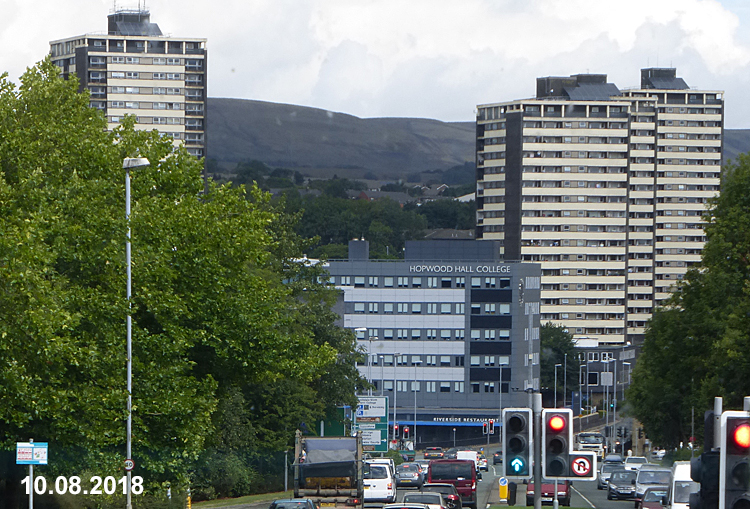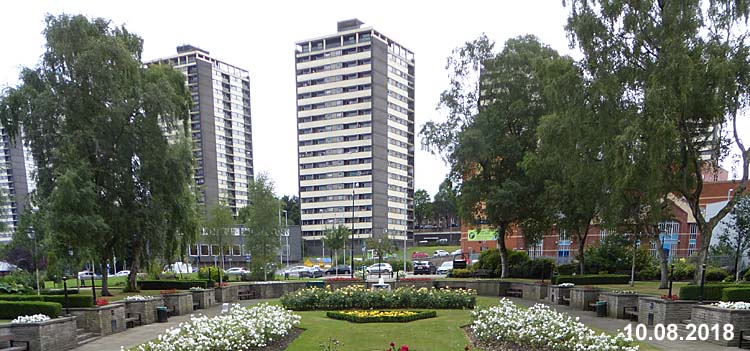
College Bank & Lower Falinge Flats
 The residential towers on College
Bank and Lower Falinge have dominated the Rochdale
skyline since the 1960s. Known as "The
Seven Sisters" the towers were designed
by Rochdale’s borough surveyor Mr W H G Mercer and Mr
E V Collins, who worked as George Wimpey and Company’s
chief architect.
 An article in the Manchester Evening News in June of 2017 explained that, "The £2.5m plans (for the construction of the flats) were first unveiled in July 1962 as a potent symbol of the town’s determination to emerge from its dark industrial past into the bright new world which opened up during postwar regeneration. Named after buildings such as Mardyke and Dunkirk House which stood in a slum estate called the Paddock, which the blocks replaced, College Bank would provide 761 homes." The article goes on to discuss the plans for the future of the flats saying that, "... Housing bosses have announced a multi-million pound makeover of the highrise estate, which is officially known as College Bank, and nearby Lower Falinge". ... "Four of the towers - Mitchell Hey, Dunkirk Rise, Tentercroft and Town Mill Brow - would be demolished to make way for up to 120 new homes. The three remaining blocks - Mardyke, Holland Rise and Underwood - would be modernised under the proposals drawn up by renowned architects Levitt Bernstein. Sixteen of the 26 two-storey blocks on the nearby Lower Falinge estate, which contain 244 occupied flats, would also be knocked down with up to 560 new houses built in their place." 
|
Close Window
